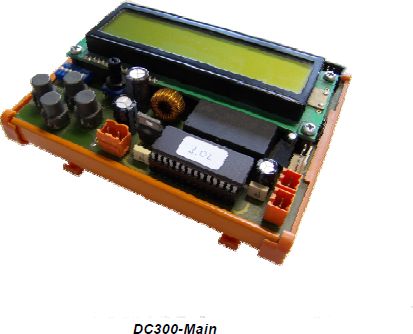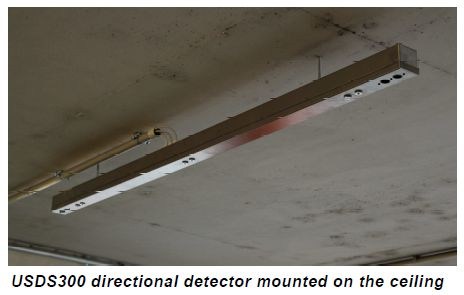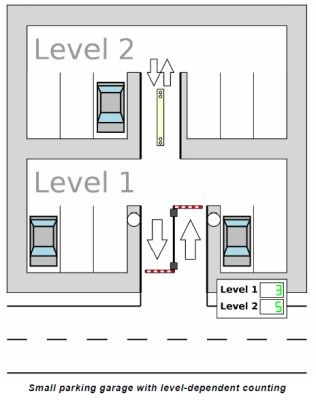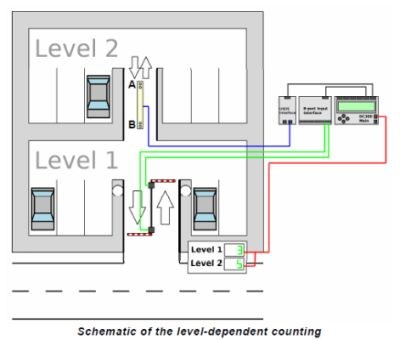CUR's Case Study - Applications of the DC 300: Part II

The data concentrator DC300 is a device that can manage counting inputs from different sources, like USDS directional detectors or potential free contacts, calculate the residual spaces and send this information to connected signs or output modules. The DC300 comes with basic functionality and is expandable by different modules to fit the customer requirements.
Expansion to a level-dependent counting
On the next step, this system gets expanded with a level-dependent counting. The residual spaces are not only shown for the whole parking garage, but for each level separately.
To meet this requirement, an additional sensor is required to detect vehicles and the driving direction on the ramp to the next level. The USDS300 is very well suited for this application, because it detects the vehicles direction dependent and can be easily mounted on the ceiling above the ramp. If it is not possible to mount an USDS, e.g. on open air parking places, it is also possible to connect an induction loop system over the potential free contacts.

Note: In a parking garage, mostly two or more driving lanes are used for entry and exit in the other parking levels. In this case, an USDS300 is needed for every driving lane. It is not possible to mount the USDS300 between two driving lanes in order to detect both.

The USDS300 directional detector is connected via the USDS-Interface with the data concentrator. Both signs are connected with the RS485 communication of the data concentrator. Only one RS485 bus is necessary to control both signs. For differentiation of both signs, an address can be set on the sign. For example, the sign for level 1 is set to address 1, the sign for level 2 is set to address 2.

To get the system running, the data concentrator has to be configured first.
To differentiate the vehicle direction on the USDS300, one side of the USDS is named A, the other is named B, so there are two directions: A->B and B->A.
Because there are two different levels that we want to count, we need two counters for that. For example, we use counter 1 for level 1 and counter 2 for level 2.
Now, the counter for level 1 gets configured. To drive into level 1, there are two possibilities: Driving through the entrance barrier or driving from level 2 to level 1 (USDS A -> B). Both events result in a lower available parking space count in level 1, so these events shall count negative to this counter. Driving through the exit barrier or from level 1 to level 2 (USDS B -> A), the available parking spaces increase, so these events shall count positive.
Counter 2, responsible for level 2, is only affected by the USDS. Driving from level 1 to level 2 (USDS B -> A) shall count negative on this counter, driving the opposite way (USDS A -> B) shall count positive.
The next step is to assign the counters to the signs, counter 1 to sign 1 and counter 2 to sign 2.
The last step is to set both counters to the actual value of the free parking spaces. The system is now ready und showing the residual spaces of every level on the entrance of the parking garage.
About CUR Systemtechnik 
We have been successfully developing and producing electronic equipment and devices for more than 20 years.
Our main fields of activity are:
Traffic technology – e.g. electronic displays, vehicle recognition sensors, data concentrators, car park system-software for multi-story car parks.
Control technology - analogue and digital special developments, circuit board control with microprocessors, etc.
Industrial electronics – e.g. Charge controller for batteries, solar equipment, security systems, transmission technology, etc. – propulsion technology, engine regulation, bearing regulation, etc.
We have a large international following due to our innovated and futureorientated technology, the high quality of our products and services, our flexibility and our customer satisfaction.





Comments
There are no comments yet for this item
Join the discussion